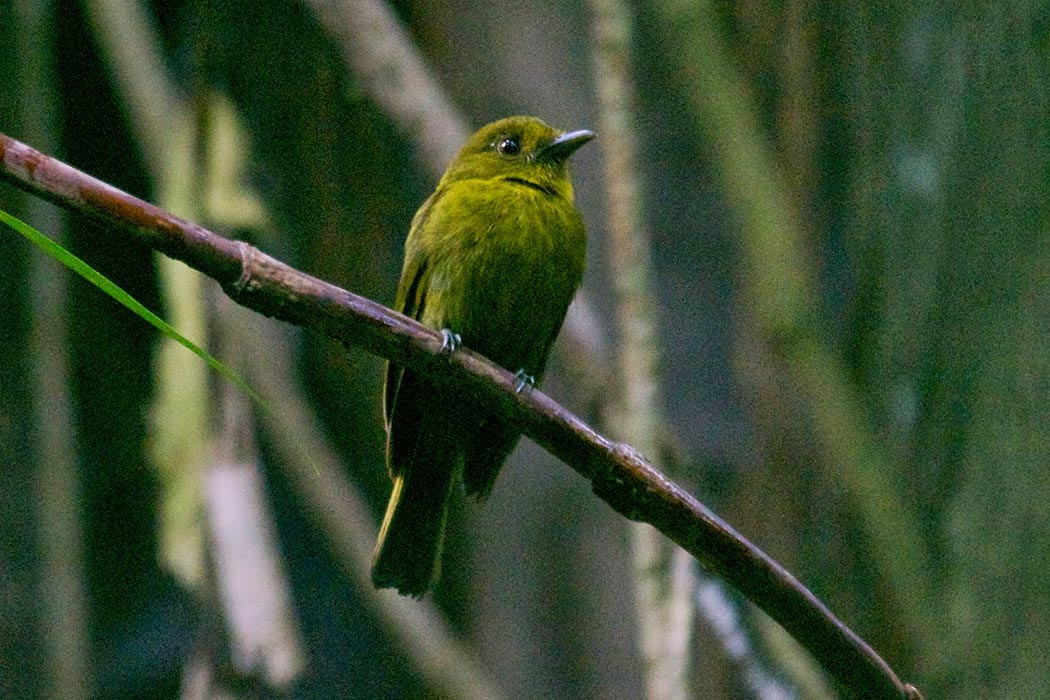Deep in a Central American rainforest, ornithologists have discovered that a rare bird has an unusual lifestyle. The bird, a Sapayoa, is a small, olive-green bird that lives in highly remote areas. Now it seems that the Sapayoa lives in social circumstances colorfully described by the website IFL Science as a “bisexual bird commune.” The reality is a little more prosaic—breeding Sapayoa pairs are assisted in raising young by underage helpers—but some same-sex mating behavior was observed as well. These discoveries led to some expressions of surprise, but the Sapayoa seems to have combined two common social behaviors in birds, helping and same-sex activities.
Birds can be social creatures, often living in flocks or communal nests that require organization to function. Dominance hierarchies are common—“Pecking order” literally derives from dominance relationships in domestic chickens. One smaller system of social organization, apparently employed by the Sapayoa, is helping, wherein non-breeding individuals of the same species assist in raising a different pair’s young. It is common that the helpers are older siblings of the babies. By helping, the siblings help ensure their own genetic fitness until they can breed themselves. Their siblings contain at least 50% of their genome, so helping them helps keep their genetic legacy going. Helping may also be a practical strategy for juvenile birds to maintain a place until a territory of their own opens up. It is unclear which explanation applies for the Sapayoa, but the helper birds are juveniles, supporting the notion that they are fledglings from a previous season.
The other component of Sapayoa behavior, same-sex mating, is also common in a variety of animals and birds. The researchers theorize that same-sex behavior in Sapayoas helps maintain a dominance hierarchy, although that function is more common in non-human primates. A different possibility, observed in vultures, is that these encounters are a way to reduce aggression in crowded living situations. Bearded vultures are polyandrous, so one female mates with multiple (two, in this case) males. The three share responsibility for raising the young. Careful study of these vulture “families” suggests that rather than one male being dominant to the other, the two males engage in same-sex encounters as an alternative to potentially dangerous fights.
Taken together, behaviors described as surprising in the Sapayoa really aren’t. Helpers are common in avian culture, and so are same-sex encounters. In fact, the helper system lends itself to creative aggression avoidance, since multiple same-sex individuals coexist in close quarters. The new insights into the secretive Sapayoa’s ways do show just how varied life is. Even birds have elaborate social lives, far from prying eyes.







